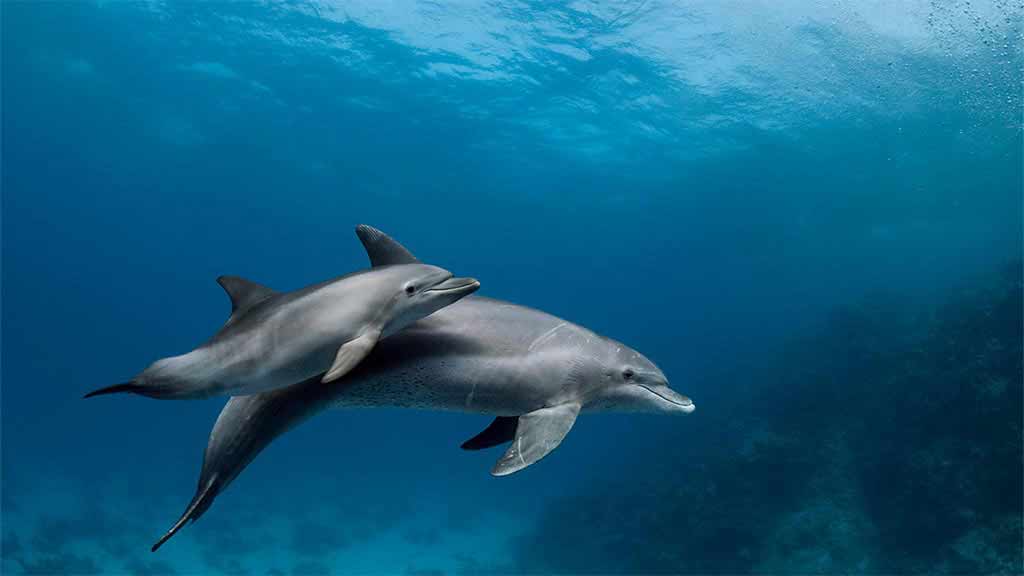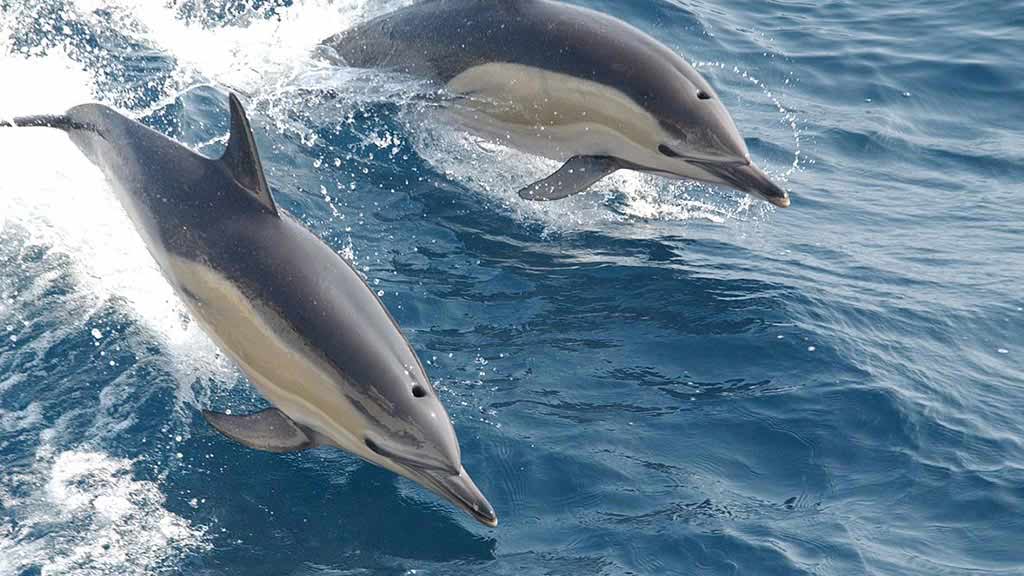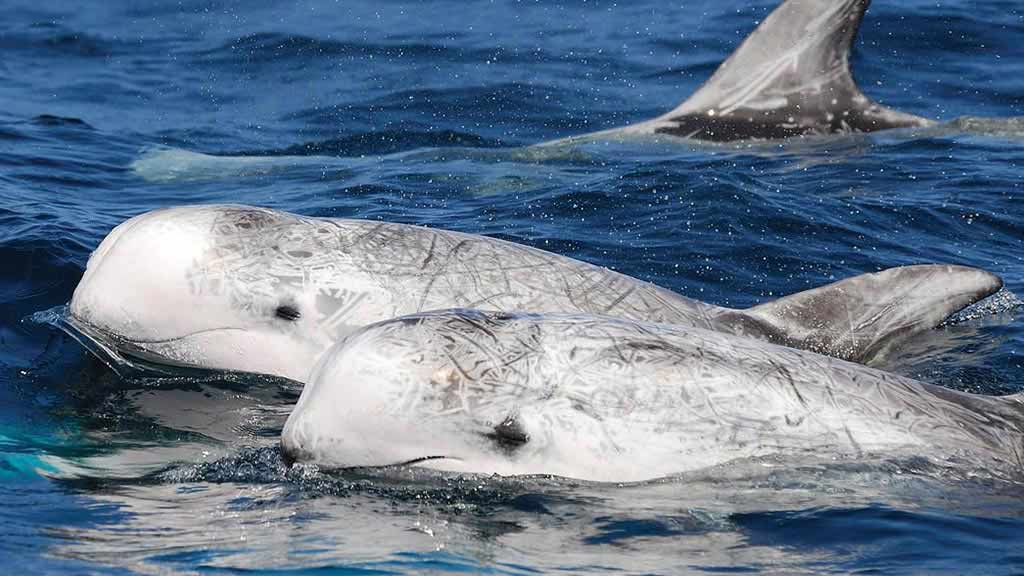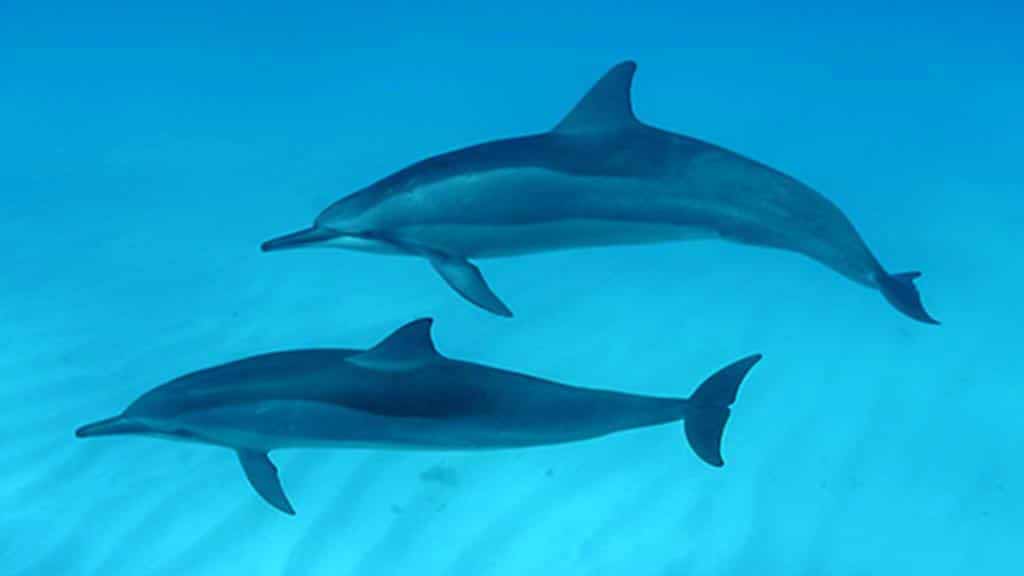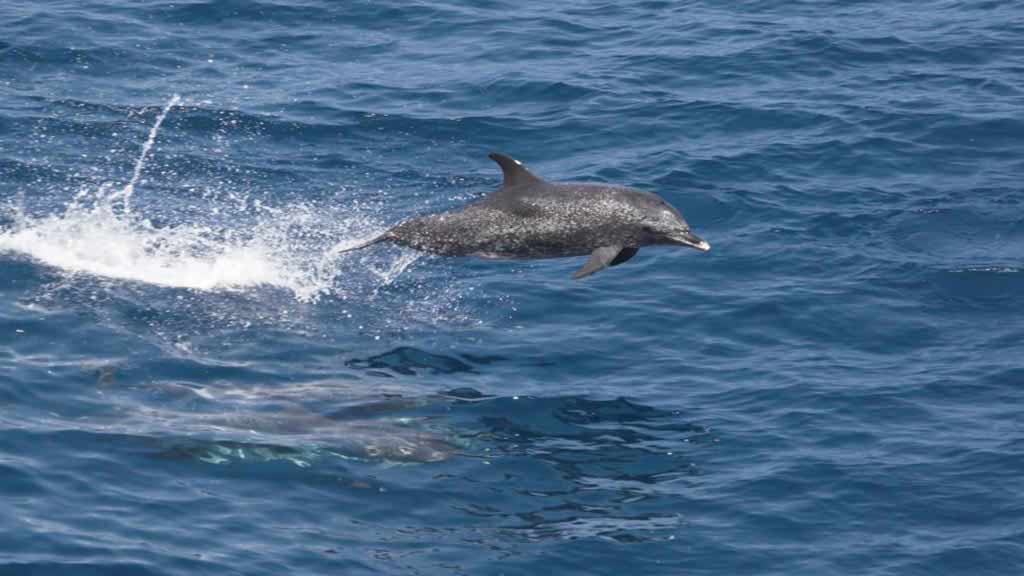Galapagos Dolphins
Are there dolphins in the Galapagos? Absolutely! Galapagos Dolphins are a popular sight for many visitors, and will often swim up close to tourist yachts. Not only are dolphins a highly intelligent species, they are also playful and inquisitive around people - a behavior that makes them a great favorite on cruises. So keep your eyes peeled because you never know when or where Galapagos dolphins might appear.
Read on for everything you need to know about dolphins at Galapagos. Which species to look out for? And where and when is best to see Galapagos dolphins?
SECURE YOUR GALAPAGOS TRAVEL
Get a FREE personalised quote todayHow to See Dolphins at Galapagos?
The best opportunity to spot Galapagos Dolphins is aboard a Galapagos Cruise. Out in the open ocean, your naturalist guide and captain will have their eyes peeled, alerting guests if dolphins are spotted close by. Of course a degree of luck is always required for dolphin spotting, but sightings are fairly common. It's also possible to see them during a Galapagos land tour - they sometimes follow day tour yachts as they navigate between islands.
Where to see Galapagos dolphins?
Dolphins can be found right across the archipelago, but are rarely in the exact same place twice. So where is the best place at Galapagos for dolphins? It varies, but try the Bolivar channel between Isabela and Fernandina islands. Here the seas are cold, but rich in nutrients and schools of fish. This makes Bolivar Channel popular with feeding dolphins and whales. Common sightings have also been reported in the waters off North Seymour island in September and October.
When to see dolphins in the Galapagos?
Galapagos dolphins can be spotted year round. The best time of year is from July to November when they arrive in greater numbers to feed. This is the Cool and Dry season when the cold Humboldt current sweeps up from the Antarctic, rich in krill and nutrients. This creates a feeding bonanza for marine species, and attracts migratory whales and dolphins to join the feast.
Contact us for a FREE GALAPAGOS TOUR QUOTE with no obligations, or for more information to organize your own Galapagos vacation. Whilst we can't guarantee dolphin sightings, what we can promise is the vacation of a lifetime!
Species of Galapagos Dolphin
Five different dolphin species frequent Galapagos waters. Two (Bottlenose & Common Dolphin) are permanent residents inside the marine reserve. The others pass through on their migratory paths.
Dolphins live together in pods, and demonstrate complex social behaviors. They have no sense of smell, but other senses are well developed to compensate. They have impressive eyesight, and very acute hearing – capable of detecting frequencies ten times higher than humans. Dolphins are carnivores, feeding on fish, squid and crustaceans.
Galapagos Bottlenose Dolphin
Conservation Status: Least Concern
Scientific Name: Tursiops Truncatus
The Bottlenose is the most common Galapagos dolphin species. They can often be spotted breaching the wake of boats, or swimming and jumping playfully. Bottlenose dolphins have adapted to the cooler Galapagos waters by developing a fat body composition. They have more fat than Bottlenoses in other parts of world, to keep them warm on deep dives in the cold Galapagos ocean.
Adult bottlenose dolphins grow to between two to four metres in length, with males usually larger than females. They can be recognised by their grey colour, which varies from dark blue/grey upper body, to a much lighter underbelly. Bottlenose dolphins are naturally built for high-speed swimming, capable of reaching speeds up to 48.3 km/h.
GET FREE ADVICE
From a Galapagos destination expert todayCommon Dolphin
Conservation Status: Least Concern
Scientific Name: Delphinus Capensis & Delphinus Delphis
At Galapagos there are two different species of Common Dolphin: Long-beaked and Short-beaked, often spotted in large pods of 100 or more. Have your camera at the ready, because Common Dolphins love to show off. They jump acrobatically from the water, slap tails, and generally have heaps of fun together.
The Common dolphin is a smaller species than their Bottlenose cousins, and are recognisable by the yellow hourglass pattern on their sides. They feed on schools of fish and squid, working as a team to drive their prey to the water’s surface, where other members of the pod swoop in for the catch.
Risso’s Dolphin
Conservation Status: Least Concern
Scientific Name: Gramous Griseus
The Risso’s Dolphin is an occasional visitor to the Galapagos Marine Reserve. This dolphin species migrates between temperate waters of the world’s oceans. The appearance of the Risso's dolphin is distinct from other species. They have no beak, scarred skin from scrapes with other dolphins, a shark-like dorsal fin, and white markings under their chin. They tend to travel in smaller groups, and can sometimes been observed together with other dolphin or whale species.
Spinner Dolphin
Conservation Status: n/a (not enough data)
Scientific Name: Stenella Longirostris
The Spinner Dolphin is another species that lives in temperate waters around the world, and sometimes passes through Galapagos waters. They are smaller than other Galapagos dolphin species, measuring from 1.5 to 2 metres long. But what they lack in size they make up for in spectacular acrobatics – spinning laterally as they jump from the water.
Pantropical Spotted Dolphin
Conservation Status: Least Concern
Scientific Name: Stenella Attenuata
Pantropical Spotted Dolphins can often be spotted at Galapagos islands. As their name suggests they can be identified by their spotted bodies. They have a long, thin beak, and three shades of body colour – ranging from dark on top, dropping a few tones in the middle, and light grey/white underbelly.
Book With The #1 Trusted
Galapagos Travel Agency
If you enjoyed reading this article, then check out our other posts about Galapagos Sharks, and Whales that can be spotted at Galapagos.
In conclusion, Galapagos dolphins are a wonderful and often unexpected surprise for visitors. If you are lucky enough to spot a passing dolphin pod then be sure to appreciate the moment, because you never know if or when they might appear. Most tourists travel to the islands to see the typical iconic Galapagos animal species. But everyone loves dolphins, and they can be a spectacular bonus to your Galapagos experience.



